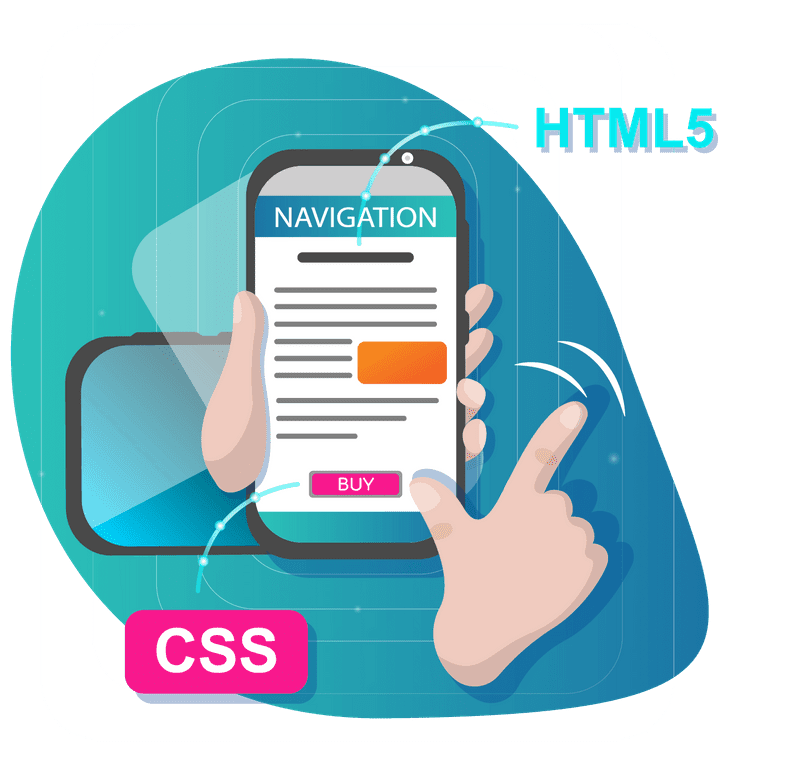Desktop Vs Mobile. The Nuances in Optimization
READ WHOLE ARTICLE

If you have a website, check how many visitors open it on tablets and smartphones – perhaps the result will surprise you. The higher the percentage of such visitors, the more closely you need to consider the design of both desktop and mobile versions of the site.
From PCs to cell phones in a growing universe of various screens and gadgets, we can securely say that entrance to the world’s data on-request is a piece of our lives now. People expect connectivity wherever they are and on whatever gadget they pick — this is the new standard. So it’s the ideal opportunity for companies to advance their projects and comprehend their clients.
The problem is that the screen size imposes limitations: you need to keep the design and connection with the desktop version, but at the same time take into account the peculiarities of behavior and customer needs.
This article is a brief guide to the main nuances of the mobile version developing which you need to remember. Consider them in the design and get an influx of orders and customer loyalty.
1. Touch-screen input
Most cell phones are touch-screen. As opposed to using a mouse, most by far of mobile owners work with their gadgets utilizing their fingers. This has a few consequences for mobile site creators, including:
 |
There is no mouse pointer, so there is no hovering over a page component. Route menus and different controls that depend on the CSS hover pseudo-class or JavaScript mouse-over/mouse-out events won’t function properly on touch-screen gadgets. Some mobile programs use different traps to make up for this, for example, terminating a hover event when the user taps the component once, and a tick event in case they tap once more. However, it’s best not to depend on hovering for your mobile site’s usefulness. |
- Less accuracy
Clicking a 16-pixel-high content connection with a mouse is no issue but tapping it with a thumb is a problem. Clients can make up for this by zooming in, however, it’s still inconvenient. This is a standout amongst the best contentions for making a different site only for mobile users since you would then be able to replace those tiny links with decent, substantial, big buttons and different controls.
- Gestures
Most modern touch-screen gadgets enable the owner to perform signals utilizing at least one or many fingers, for example, swiping, zooming, etc. You can use gestures to improve the experience for your mobile users, e.g. you can let your users swipe left and directly to move between pictures in a display. Numerous JavaScript systems, for example, jQuery Mobile can create events for different touch signals, making it less demanding to add motion backing to your versatile destinations.
2. Optimization for devices with a small display
Mobile traffic is growing, and search engines have developed a separate mobile issue: there are sites adapted for devices with a small display.
Therefore, you need to focus on it when developing a mobile version. Main points:
- Mobile users more often use short queries consisting of 1-3 words. This allows, without harming SEO, to make short headlines that are better perceived from the screen with a small diagonal.
- Processor power is very important. 29% of mobile users instantly switch to another site or application if they do not receive an answer to their question or wait too long to download. Besides, the speed of the site affects the position in the search. Webmasters say that Google prefers AMP pages, rather than just optimized for the mobile issue.
- The mobile version is most often placed on a subdomain. Changes, that are made to the desktop version, doesn’t affect, if you don’t synchronize. If you have different content for the two versions, take care of synchronization: then you can update the assortment, product availability, prices, discounts, information about promotions and other important points simultaneously on both versions of the site.
- Flash technology, which many people still use on their websites, is not supported in the mobile version. If videos are needed – embed them using more advanced HTML5 technology. Get ready for the fact that the results of the mobile issue may be better or worse than the main site.
How to Make Mobile Applications Performance Optimization
3. Portrait screens
Most desktop screens have a landscape orientation, but the inverse is valid for cell phones most clients hold their gadget in a portrait one.
This fact causes the increase of popularity of the sites with such design as:
- Fewer columns of content (a solitary section is perfect)
- No wide components
- Navigation at the top, not down the site
4. People use cell phones in an unexpected way
This is maybe a standout amongst the most vital contrasts between the mobile and desktop web experience. A great part of the time, people utilize their cell phones differently from their PC, and for other sorts of assignments.
When the user goes to the website from the PC or the smartphone, he has different goals. A personal computer is convenient to surf, compare and select things for a long time, ask prices – which means you can sharpen the main version of the site specifically to involve and retain a potential buyer, gain his trust and “warm up”.
Smartphone users are looking for something quick and on-demand – hairdressing, restaurants, service stations, gifts. They are able to make a decision about buying spontaneously – especially with regard to clothes, jewelry, and cheap gadgets. The task of the mobile version is to simplify the ordering process and to do everything so that the buyer not only chooses but purchase. Therefore, we recommend sharpening the funnel under the conversion impact: orders, consultations, calls, etc.
Smartphone users prefer coming up the site with one click that’s why PWA (progressive web application) start taking up the world. It is a website that looks and behaves just like a mobile application, which means that you can add it to your smartphone’s main screen, send push notifications, access device hardware, and work offline. With PWA, your business automatically “hits” the client’s smartphone. This is one of the hottest trends in web development, more and more people want to learn about this concept, so it will definitely take up the market soon.
5. Advertising and analytics
70% of mobile users have declared aversion of advertising on their devices, and their number is growing every year by 90%. The screen of the smartphone is much smaller, the ads are very striking. If advertising is necessary, reduce it to a minimum. In this case, you must adhere to valid formats. Since January 2017, Google has severely punished annoying ads and pop-up windows, lowering individual pages in output. For the mobile version, there is a separate search, and there are their own ranking factors. To accurately measure traffic and conversions, you need to set up analytics separately. By the way, its results can be very different from the desktop parameters, be ready for this. The same rule applies to mobile advertising campaigns. You need to customize other ad formats through Google network, i.e. share ad campaigns too. | 
|
Most Common SEO Mistakes for E-commerce
Conclusion
When designing any website that will be viewed on mobile devices, it’s important to keep these differences in mind. By accommodating both desktop and mobile in your website strategy, you can provide a great experience for both of these audiences. It doesn’t matter what you do on the Internet – selling clothes, giving courses, offering home appliance, repair services, blogging and making money on native advertising, etc. – if your site does not have a convenient mobile version yet, it’s time to change it. To solve this problem, you can improve the existing mobile version or create a new one with Multi-Programming Solutions development company.
Contact us to get more information!

36 Kings Road
CM1 4HP Chelmsford
England


